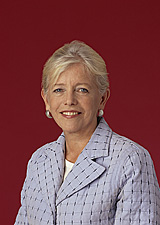
Director's Page
Josephine P. Briggs, M.D.
Message from the Director
From Bench to Bedside: The Need to Fill Information Gaps
April 15, 2009
For 10 years, NCCAM has been supporting research studies on complementary and alternative medicine (CAM) practices, determining their safety and effectiveness, and reporting the findings to the medical community and to the public. In these 10 years, we have funded more than 2,200 research projects, resulting in more than 3,300 articles published in peer-reviewed medical journals.
A paper published in the April 13, 2009 Archives of Internal Medicine exposes a gap in the knowledge and application of CAM research in clinical practice. In sum, approximately one in four clinicians was aware of two major CAM clinical trials. The 1,561 clinicians surveyed included acupuncturists, naturopaths, internists, and rheumatologists.
This finding is only one part of a larger issue; there are other contributing factors to consider. According to the National Health Interview Survey, about 40 percent of Americans are using some form of CAM. A 2006 NCCAM/AARP survey revealed that less than one-third of CAM users age 50+ talk to their physicians about CAM use. Together, these factors point to serious information gaps between what people are using for their health and what the state of the science is to support that use. To ensure safe and integrated care, health care providers need to be aware of what CAM practices their patients are using and also be aware of the state of the research on CAM.
So, while the first step in safe and effective integration of CAM practices into health care is to conduct rigorous, objective research, the next step—and an equally important step—is to make health care providers aware of these results.
How can health care providers stay informed?
- The NCCAM Web site has up-to-date, authoritative information about the state of the research on dozens of CAM modalities.
- CAM on PubMed is a key source for published literature on CAM.
- The NCCAM newsletter focuses on the information needs of health care providers.
- NCCAM Update is an easy way to get quick information right in your e-mail.
- NCCAM's RSS feeds will alert you when important new information is posted to our Web site.
- NCCAM has also created a toolkit of materials aimed at encouraging patients and health care providers to make "Time to Talk" about the use of CAM.
- The National Guideline Clearinghouse provides a searchable database of clinical practice guidelines including many CAM modalities.
I encourage you to take advantage of these tools and resources, and let us know how we can ensure that these important research findings reach you.
Note: PDF files requires a viewer such as the free Adobe Reader.
